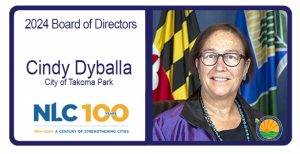ANNAPOLIS, MD — Governor Wes Moore announced $63.7 million in Fiscal Year 2024 awards for seven state revitalization programs administered by the Maryland Department of Housing and Community Development. The awards to county and municipal governments, community development organizations, and other community institutions and partners will fund 219 projects and activities directly supporting local revitalization goals.
Read the entire Press Release (PDF).
The City of Takoma Park received two awards totaling $400,000:
- City of Takoma Park: Richardson School of Music Rehab Rehabilitation of the historic 7312 Carroll Ave for the Richardson School of Music. Award – $150,000
- City of Takoma Park: Multifamily Building Improvement Fund Complete weatherization, energy efficiency, and electrification improvements to preserve affordable housing of small-scale (5 – 25 unit) rent-stabilized multifamily properties. Award – $250,000


